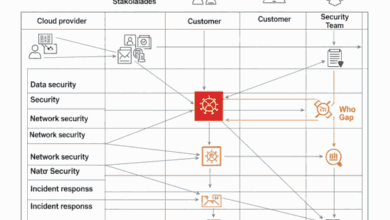Is Quickstep a Virus? Your Android Phone Explained

Introducing Quickstep: Your Indispensable Companion on Android
Quickstep is a part of your Android device and builds the backbone of the way it works and feels. Because it plays a role, many myths surround Quickstep, and usually, people confuse it with being a virus or malware.
In this introductory blog post, we’re going to burst some bubbles of truth about Quickstep, refute the myths, and shed light on its function on your Android device. By the end, you will know clearly what Quickstep is and why it’s a fundamental part of your device’s performance.
Come, join us as we take a trip to the world of Quickstep. Learn fact from fiction and get armed with just the right knowledge to help you take optimum advantage of your Android. Get set to be enlightened with the truth about Quickstep!
Understanding Quickstep
Quickstep is a core element of any Android operating system. It smoothes the navigation of users and the management of apps. The functions and significance of Quickstep have to be understood for exploiting the Android experience to maximum leverage:
What is Quickstep?
Quickstep is an Android device launcher and task manager; it helps you handle the home screen, app drawer, and recent apps menu, making it easy for customers to navigate through various applications on the devices.
Features and Functions of Quickstep
- App Switching: Quickstep allows users to switch back and forth between open applications promptly. By tapping the recent apps button or through a swipe up from the bottom of the screen, users shall be given a carousel of the recently used apps, hence making multitasking efficient and convenient.
- Home Screen Management: QuickStep is responsible for the layout and management of the home screen. This includes app icons, widgets, and wallpapers. Users can customize their Home Screen to suit their choices by arranging apps and widgets to ease accessibility.
- App Drawer: Quickstep houses the app drawer, a no-frills launcher that keeps all the installed applications in one place. It allows users to search for apps, create folders, or even uninstall apps that are not needed directly from the app drawer.
Importance to User Experience
Quickstep is, therefore, the cornerstone of a smooth and intuitive user experience in Android devices. The level of integration it has with the OS ensures productivity and usability, enabling users to easily navigate around their devices.
Knowledge of its features and purpose will serve to the user’s advantage in interacting with their Android phones and help maximize efficiency and convenience in use.
Common Myths Associated with Quickstep
Even though it is deeply integrated into the Android operating system, Quickstep is one of the most misconstrued topics, full of fallacies and unfounded fears. Let us demystify some of these commonly fanned myths that center around Quickstep and find the truth behind them.
Myth 1: Quickstep is a Virus
Misconception: A general idea that most users are trapped in is the thought that Quickstep is a virus or malware that would go on to attack your device and make it less secure.
Fact: Quickstep is not malware. Quickstep is a fully legitimate part of the system, developed and conceptualized by Google to enrich the usage of Android-based end-users.
Myth 2: Quickstep Lowers Android Device Performance
Misconception: Some people believe Quickstep needs massive resource usage, which makes Android cell phones slow.
Reality: Quickstep optimizes applications for execution on Android devices with efficiency, reducing resource consumption hassle for smoother performance. It boosts performance due to its app-switching optimization amidst smooth navigation.
Misinformation dissemination
Only the spread of misinformation on Quickstep will either be through miscommunication forums, social media, or any other source whose credibility cannot be ascertained. This is where, at times, some users might fall prey to such bloated or exaggerated misinformation, overly worrying about the security and performance levels of their devices.
Users’ perception
Such misconceptions can, in turn, reduce users’ trust in the Android platform and instill unnecessary anxiety over the safety of their devices. Setting the record straight on these is necessary to forestall unnecessary fear and confusion.
The Need for Accurate Information
With such misinformation and mythology instilled in them, there is no way that people can ever come to know the truth and functioning of Quickstep. We tried to inform people about the actual state of things, which would enable more and more people to decide for themselves about their Android devices.
Unmasking Quickstep as a Virus
All these myths around Quickstep raise questions in the minds of many users about whether it is valid and secure or not. Consider this, in detail, the reality is, that it doesn’t look like a virus/malware on any close examination. Let us clean them for myth-based presumptions and understand why Quickstep is an entirely sound Android system component.
Virus / Malware has these characteristics
- Malicious Intention: Viruses and malware are made for malicious purposes to cause harm, or somehow exploit the user’s device for bad deeds.
- Unwanted Behavior: They typically result in unwanted behavior, such as theft of information, corruption of files, and system instability.
- Infiltration Modes: In most cases, viruses and malware infiltrate systems through fake means, such as phishing, malign sites, or distrusted downloads.
Why Quickstep Is Not a Virus
- Official Module: Quickstep is the official module of the Google-made Android operating system. It undergoes significant testing and rigorous analysis for compatibility and security.
- Transparent Functionality: Most of Quickstep’s functionality is transparent, obviously documented, and very crucial in improving the user experience, for instance, the app switch and navigation features.
- No Evidence of Malware: Quickstep does not show any characteristics typically exhibited by a virus or malware because it operates within its intended operations and, as such, it is not a threat to the user’s security and privacy.
Evidence by Cybersecurity Experts
Computersecurity.org and other reliable cybersecurity professionals and websites further validate that Quickstep is, indeed, a valid part of the system. Their scrutiny and assessment further guarantee the good intentions of Quickstep and obliterate the suspicion of it being a virus.
Quickstep vs. Threats in the Wild
Understanding real Quickstep functions and malicious security threats is one key factor in keeping an Android device both effective and secure. Let’s find out how Quickstep can be compared to real viruses and malware and how to differentiate between native processes and vicious applications.
Genuine Functions of Quickstep
- Management of Apps: Quickstep allows smooth app switching and navigation along or through different running applications.
- User Interface: Home screen, app drawer, and recent apps menu. The interface connects the user to the device.
- User Experience Improvement: Quickstep enhances the user experience on Android-powered devices by bettering the performance of the device.
Typical real-world Threat
- Malicious Intent: Viruses, Malware, etc have their intention as malicious to break into users’ security to know the users’ privacy.
- Undesirable Behavior: They generate undesirable behavior in the system and can range from stealing personal information, violating privacy, resorting to obtrusive advertisement showcasing, or even causing system failure.
- Propagation Channel: This virus and malware propagate through devices using several deceitful ways like phishing emails, malware-based websites, or apps downloaded from unknown sources.
How Quickstep Differs from Actuality Threats
- Formal Module: Quickstep is an official module that was designed as a part of the Android operating system developed by Google. Viruses and malware are informal, and malware is even malicious for that matter.
- Transparent functionality: Quickstep’s functionality is transparent, very well-documented, and serves a legitimate purpose to enhance the experience of the user. It does not operate covertly like viruses and malware, aiming to exploit the user.
- No manifestation of malicious behavior: Quickstep does not manifest any malicious behavior that characterizes viruses and malware. It never works outside the context of its specified functions and does not compromise security or the privacy of users in any way.
Differentiating Between System Processes and Harmful Software
- Source: Downloading applications from known and trusted sources, like the Google Play Store, may reduce the likelihood of a malware attack.
- Permissions: Before installing anything, the permissions an app requests can be examined very cautiously, and any permission that does not seem pertinent to its functioning should be removed to save sensitive data from unauthorized access.
- Security Software: Proper antivirus software is essential in detecting and erasing malware that is committed to maintaining Android device security.
With the understanding of differences in Quickstep’s legitimate functions and actual security threats facing users, there can be a sound and strong safety measure for their Android devices to enjoy a seamless user experience. Let us foster security awareness for users to feel empowered to make intelligible decisions regarding the security of their devices.
Significance of System Updates
The security and performance of the Android devices are also taken care of by these system updates. The following are the reasons why system updates need to be made for the best operation of the device.
Security Enhancement
- Vulnerability Patch: Most system updates come with patches of security vulnerabilities in the Android Operating System. Users can protect themselves from a wide range of cyber threats and other malicious attacks simply by downloading such updates.
- Exploit Prevention: Hackers and cybercriminals are always looking out to find an escape through the software. System updates address this concern by closing major security loopholes and allowing reinforcement of a device’s defenses against cyber threats.
Fixing Software Bugs
- BugFixes: Software bugs and glitches that might bring about instability or poor performance in Android devices are remedied with system updates. With good patching, this is improved and brings about an enhanced user experience and smooth functioning of the device.
- Optimizing Performance: Addressing software bugs and optimizing system performance go hand in hand. System updates not only fix existing issues but also optimize the device’s performance to deliver a seamless user experience.
Staying Ahead of Emerging Threats
- New Threat Adaptation: Cyber threats change, and in time, the complexities of these threats inevitably develop. As a result, it becomes necessary and very important to stay a little ahead of the threats that are coming. There are always new security measures and protocols in the system updates to ensure that the systems are properly protected from the threats out there, whether old or new.
- Relevant: Android devices are kept current and maintained in relevance to the latest developments in software due to frequent updates of the system. They are encouraged by the manufacturer and developers to acquire new features, effect improvements, or carry out enhancements.
Encouraging Proactive Updating:
Android users are not left behind as they are prompted to update to new system versions
- User Accountability: That’s one very good reason to always update. Keeping the device up-to-date whenever the operating system wants it updated manifests the self-imposed responsibility of the user to automatically update the Android device.
- Automatically Updated: Most Android devices can be automatically updated with system updates, which will keep the devices updated. It is advised to keep them activated to facilitate an easier updating process and reduce the possibility of security breaches.
Regular updates of Android devices become essential for users because precautions must be taken to stay a step ahead, saving their devices from the clutches of security threats and ensuring smooth functionality. After all, let’s stay updated and one step ahead in the updating of devices to ensure our digital assets are safe and secure with a smooth user experience.
How to Keep Your Android Secure:
One other thing that is critical to human life involves keeping your Android device safe to keep away your data and privacy. Here are some actual ways that would improve security on your Android-based device from being susceptible to some of these threats.
1. Use Antivirus Software
- Download some good antivirus software from different sources, such as from the Google Play Store itself, which can scan your device against malware and erase it.
- Keep your antivirus software up to date as it will help in keeping it abreast with the latest virus definitions and security patches.
2. Steer Clear of Suspicious Apps
- Apps downloaded from sources other than the official ones may put individuals at stake, as malicious code or malware may come as a hidden feature in any of the apps.
- Check out user reviews for a downloaded app and the app rating before downloading it to get a real sense of reliance and trustworthiness.
3. Safe Browsing Activities
- Do not click on any links from unknown sources and do not download attachments from emails with uncertain origins; phishing is a common threat, and a link could be related to a malware download.
- Connect to the internet through secure and encrypted circuits, especially for sensitive data such as online banking or personal accounts.
4. Keep Your Device Updated
- Incorporate a routine of updating the operating system and other applications of the Android device to have a repaired security problem in it and not fall prey to a probable exploit.
- Enable Auto-Update to Ensure that auto-updates are enabled, thus keeping your device current with security patches and software updates on time.
5. Use Passwords or Biometric Locks to Secure Your Device
- Use a robust password, PIN, or biometric verification, such as a fingerprint or facial scan, to secure your device against any unauthorized access.
- Enable device encryption to protect your data in case of theft or device loss.
Conclusion
With some of the above simple but very effective tips applied, you will have an enhanced sense of security for your Android device and decrease the probability of being a victim of the cyber threat. Remember to be vigilant, good in security routines, and keep the device updated to have an overall secure and safe digital experience. Let us all empower ourselves to secure the devices and ensure the privacy of the activities we do while influencing others towards creating cybersecurity awareness.




